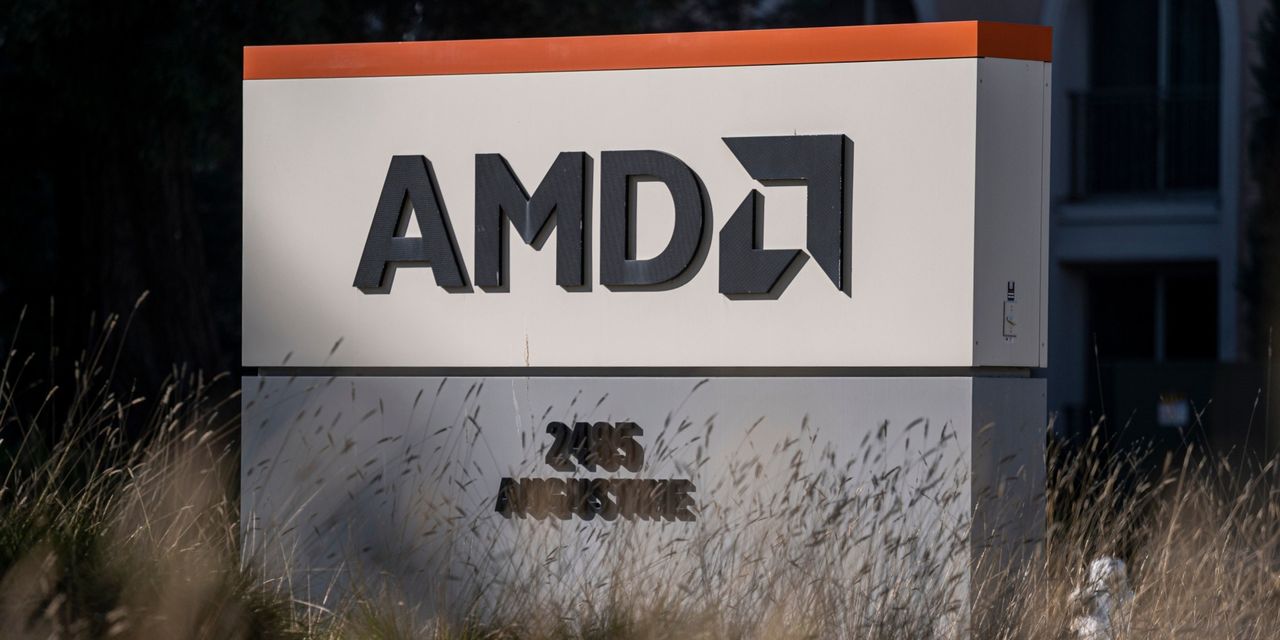The end of the pandemic boom in personal-computer sales looks like it is going to hurt chip makers more than investors — and the companies themselves — may have expected.
Advanced Micro Devices Inc.
AMD,
stunned Wall Street on Thursday with news that its third-quarter revenue would come in a whopping $1 billion less than forecast, with the industry swimming in inventory, especially in the PC market. AMD’s unexpected comments echoed similar warnings from Micron Technology Inc.
MU,
executives last week, signaling that the semiconductor downturn may be worse than some have forecast, thanks in large part to the PC industry.
The PC market saw a huge boom during the height of the COVID-19 pandemic, as many workers and students at home upgraded their systems to be able to hold Zoom
ZM,
meetings and have better systems for remote work. But sales have plunged in recent months, just as a backlog on computer chips unclogged and allowed PC makers to ship devices that consumers now no longer need.
In-depth: The pandemic PC boom is over, but its legacy will live on
Shares of AMD tumbled 4% in after-hours trading. The company said in a statement that it now expects total revenue to come in at $5.6 billion, down $1.1 billion from its previous forecast of $6.7 billion. AMD Chief Executive Lisa Su blamed PC demand and an oversupply of inventory in the market, but said the data-center business remains strong.
While there was not much more information in AMD’s press release, Micron executives — who forecast that revenue in the fiscal first quarter would come in $1 billion below estimates last week — said that the PC market was down more than previously estimated. Micron was also more cautious about the data-center business. Micron said it was now looking for PC sales to fall around 15% on a year-over-year basis, as opposed to the almost 10% drop the company forecast in June.
“Macroeconomic conditions drove lower-than-expected PC demand and a significant inventory correction across the PC supply chain,” AMD’s Su said in a statement. “As we navigate the current market conditions, we are pleased with the performance of our data center.”
Still, even as AMD tries to put a bright face on the rest of its business, the news was bad for the rest of the semiconductor sector, and especially its biggest rival in the PC business, Intel Corp.
INTC,
Intel investors have to be wondering now if the disappointing comments and forecasts from that company’s last earnings report were downcast enough.
For more: Which Intel CEO is to blame for the current woes? Or is it actually AMD’s CEO?
“This preannouncement may imply something a bit worse,” said Chris Rolland, a Susquehanna Financial analyst, in a note to clients. “A disappointing 3Q and/or 4Q from Intel may be next.” Rolland had warned investors already in a note last week that the PC market was worsening. He is forecasting the overall PC market to fall 17% for the year. He cut his estimates on AMD, Intel and Nvidia Corp.
NVDA,
In the server market, he is still optimistic about AMD’s chances of gaining share with its new Genoa chip, after Intel was hampered with a delay and now lackluster demand for its Sapphire Rapids chips. Nonetheless, he noted that the big question is: When will the PC market hit bottom? “While we wait for a bottom in the PC industry, we believe AMD will continue to take share from Intel (albeit more slowly than the last few years),” he wrote.
In the rough current environment for chip makers, there is little certainty. Previously, many bets — including by this column — have been on AMD to be one major source of strength for the chip sector. But the end of the PC boom seems to be shooting those hopes down.



